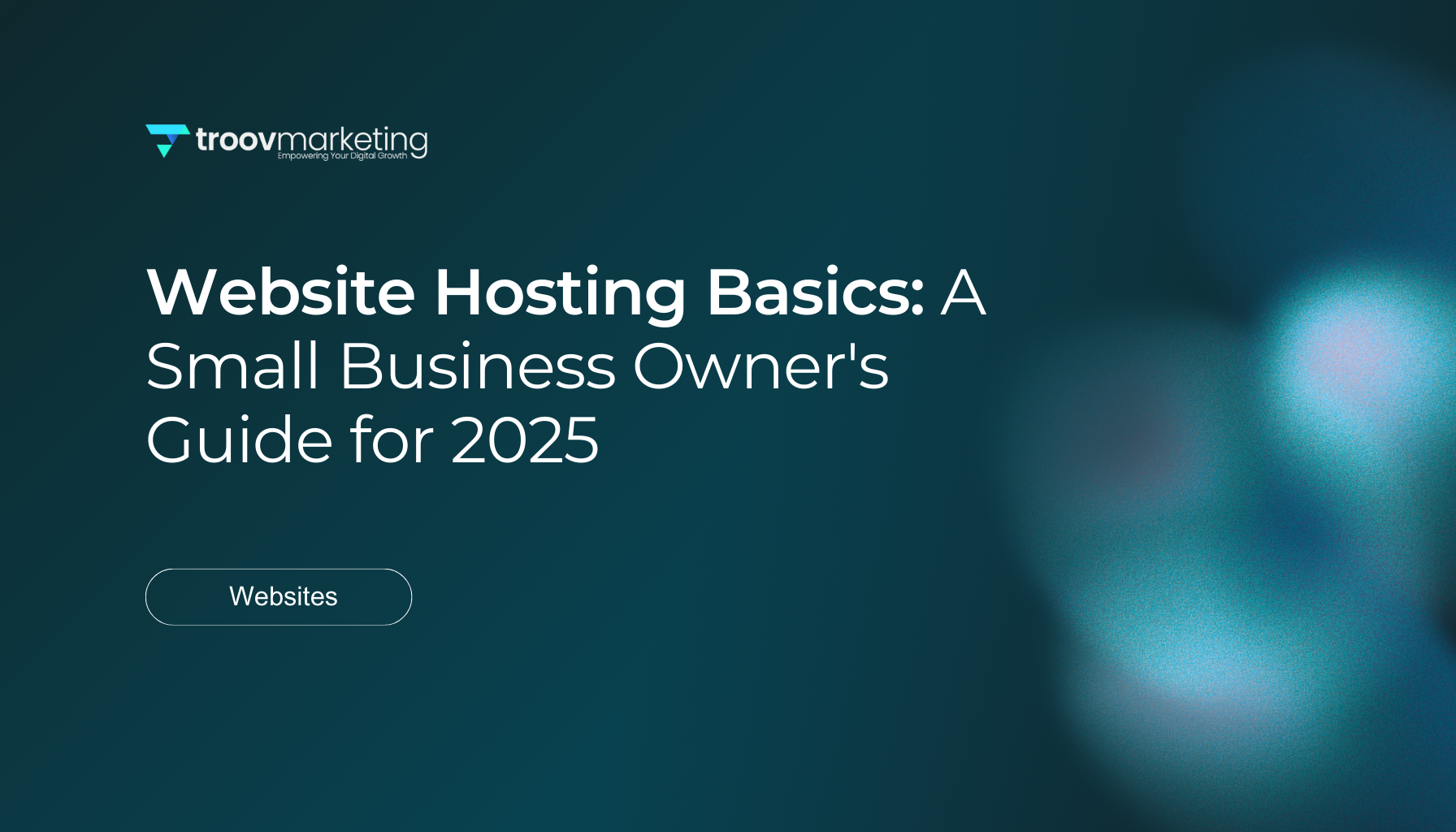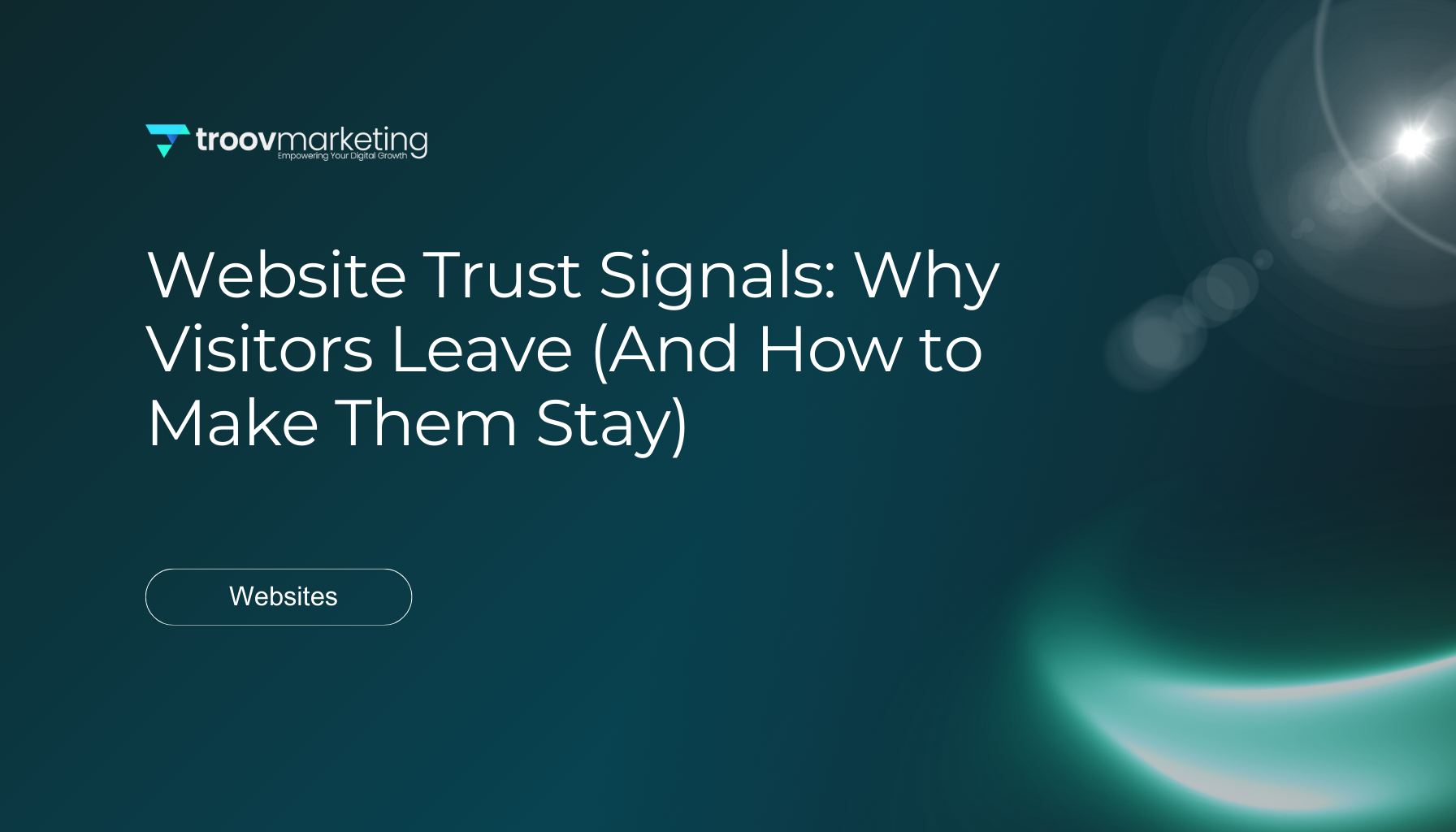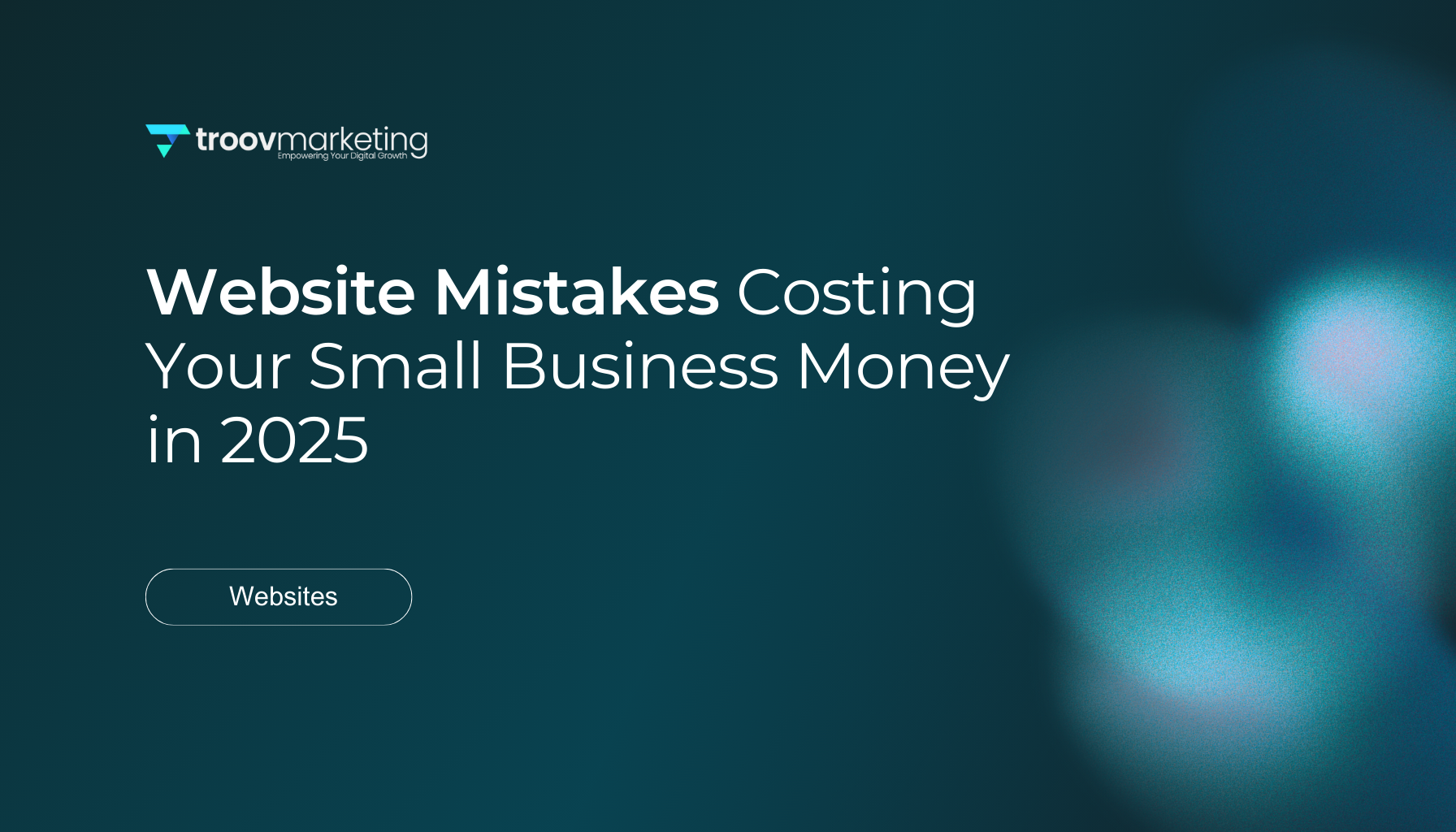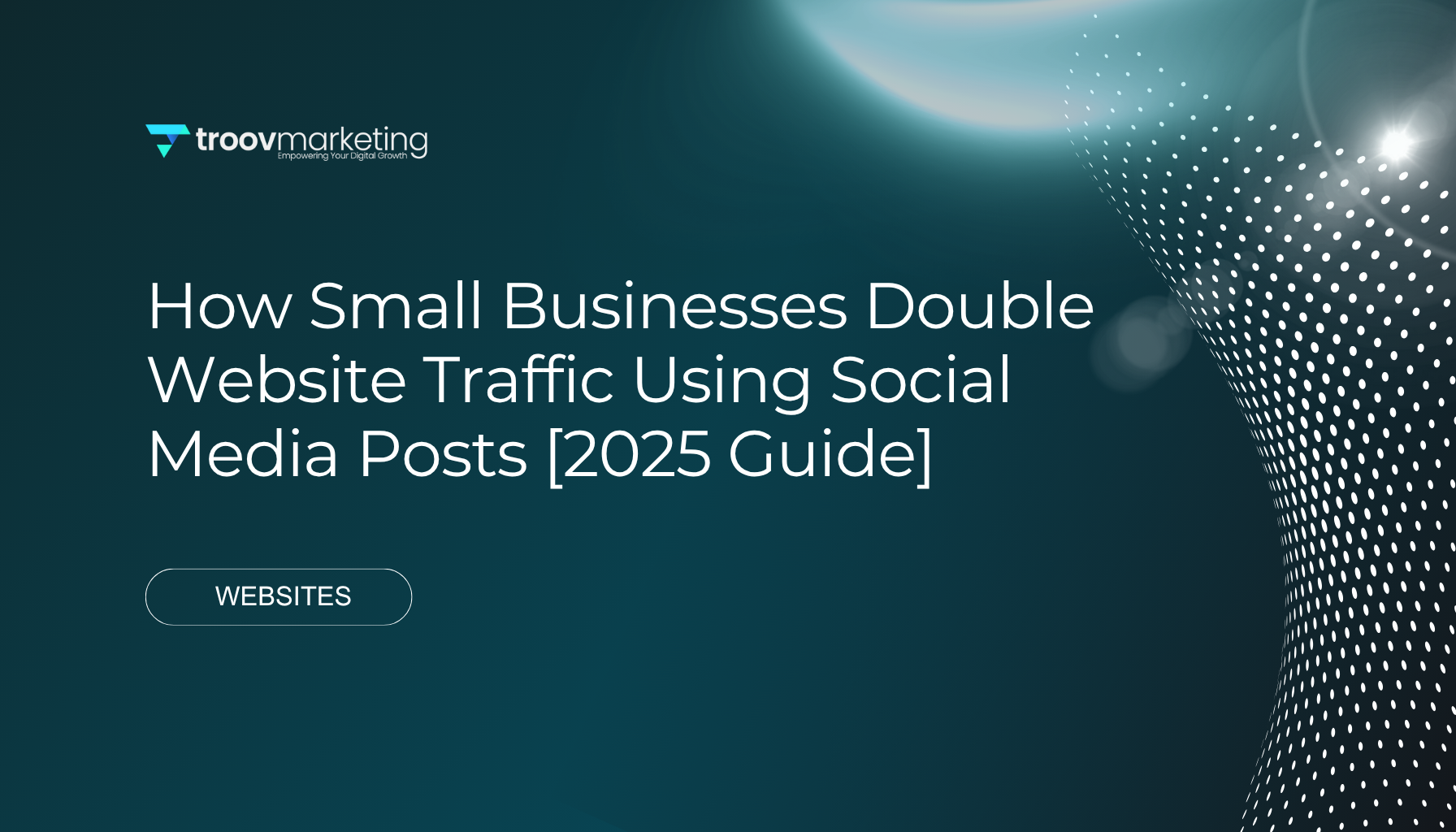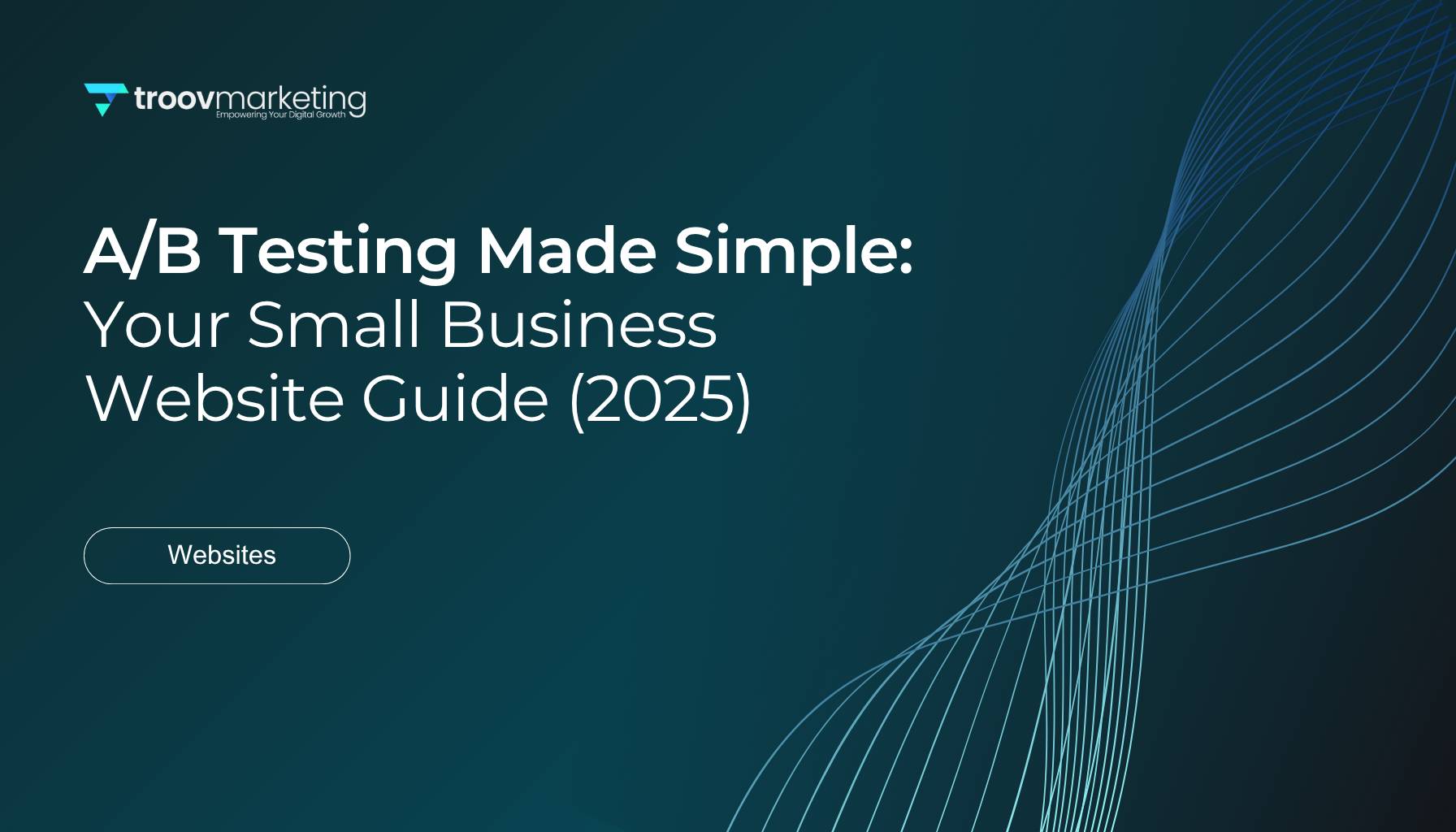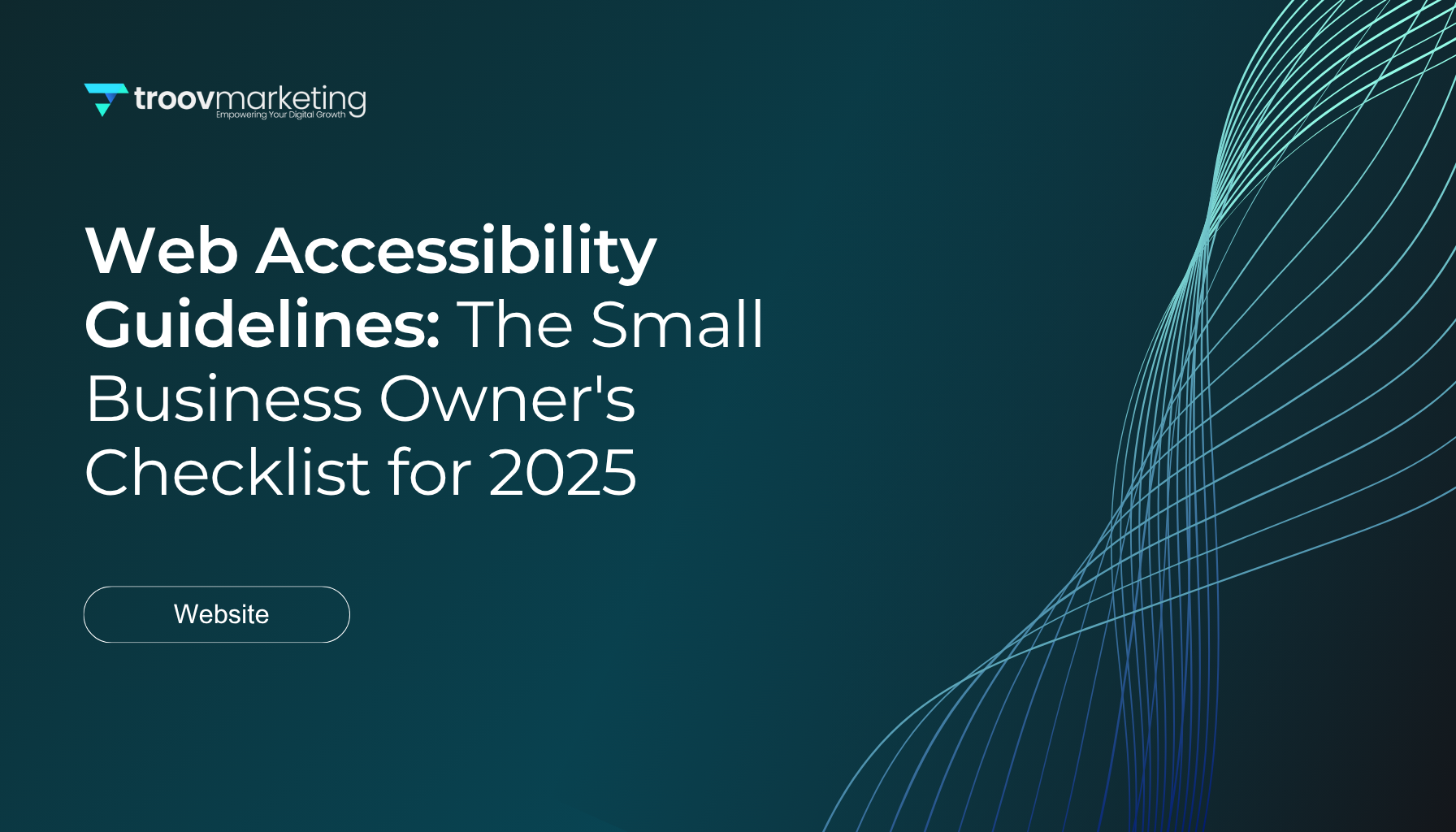Why Most Small Businesses Track Wrong Web Metrics (And What to Measure Instead)
Web metrics can trick you if you watch the wrong numbers. HubSpot research reveals that 46% of businesses see monthly site traffic between 1,001 and 15,000 visitors. Many small business owners fixate on these numbers without understanding how they affect their profits.
Tracking website metrics has become a standard practice. Traffic alone stands as a vanity metric in 2025. Business owners often get sidetracked by surface-level web analytics that shine in reports. These metrics tell us little about real business performance. A typical website receives seven page views per visit and has a bounce rate of 37%. These web metrics become meaningless numbers without proper context.
Let me show you why most small businesses track the wrong metrics and what these mistakes cost you. You'll learn which practical metrics deserve your attention to convert visitors into customers. My goal is to help you build a measurement strategy that connects directly to your business goals, rather than chasing random standards.
Why Small Businesses Track the Wrong Web Metrics
Small businesses often fall into a dangerous trap when they measure their online performance. They collect mountains of data but can't turn those numbers into useful insights. Stats show that businesses don't use almost three-quarters of their data for analytics. Let me explain why many business owners get stuck tracking impressive-looking metrics that don't mean much.
The problem with vanity metrics
Vanity metrics are numbers that make your business look great on paper but don't help with decision-making. These metrics seem valuable at first glance. The reality is they mislead you and take your focus away from what really matters.
The core issue with vanity metrics has three parts:
- They lack context and are too simple
- They miss important details and nuance
- They mislead you and don't help you improve
Raw page views, total followers, or sign-up numbers might look great in a presentation. The truth is they tell you nothing about customer behavior or revenue growth. These numbers are easy to manipulate too – you could buy social media followers or boost traffic through questionable methods.
You can easily test if you're tracking a vanity metric. Just ask yourself, "Can this metric help me make decisions or take action?" If you answer "no" or "I'm not sure," you should probably look at different metrics.
How misleading data leads to poor decisions
Bad metrics don't just waste time – they hurt your business. A real-estate client spent $175,911 on ads. Their reports showed great engagement, cheap clicks, and lots of leads. The actual results? Just four leads. That's $43,977 per lead. This wasn't about spending too much – they were tracking the wrong things.
Bad metrics create problems across your company. Marketing teams might chase traffic without thinking about sales conversion. This brings in visitors who never buy anything. Business leaders who rely on wrong data get conflicting reports. This makes it hard to agree on a strategy.
Tracking errors can really hurt because they create unreliable data and wrong analysis. Many companies don't know how to spot these issues. Marketing teams usually don't understand tracking, while developers don't know what "correct answers" look like.
Common misconceptions about website KPIs
Small businesses often make a basic mistake. They use industry-standard KPIs without thinking if these fit their needs. No two websites are the same, so how can there be "standard" website KPIs?
KPIs change a lot between industries and campaigns. They depend on what you want to achieve. Using generic KPIs blindly won't help you much.
Many businesses don't match their KPIs to their goals. If you want to boost sales revenue, website traffic might not matter. Getting 50,000 monthly visitors who never buy anything won't help your revenue goals.
Tracking too many KPIs at once is another common mistake. This can overwhelm you and make it hard to spot the metrics that really matter. Without consistent reporting over time, you can't see important trends and patterns.
A good KPI isn't just a nice-looking number. It helps you take action at the right time, for the right reason, based on the right data. Smart, actionable metrics show you what's working in your business and what isn't.
Understanding the Purpose of Web Metrics
Web metrics do more than just collect numbers - they are the foundations of analytical business decisions(link_1). These digital measurements show how visitors interact with your website and if your online presence supports your business goals effectively.
What are web metrics and why they matter
Web metrics are measurements you can count to track and analyze your website's performance. Think of them as your digital dashboard that shows traffic patterns, user behaviors, engagement levels, and conversion outcomes. The right metrics give you practical insights that affect your bottom line, unlike vanity statistics.
Website metrics matter for three main reasons:
- They remove guesswork about user priorities and behaviors
- They show solid proof of what works (and what doesn't)
- They spot improvement opportunities before problems hurt revenue
Website analytics turns raw numbers into valuable business intelligence. Google Analytics lets you understand the complete user trip across platforms—both web and app—giving you a clear picture of user behavior. Small businesses can use this visibility to streamline their online presence, enhance user experiences, and reach specific goals like higher conversions or traffic.
Arranging metrics with business goals
The right connection between your metrics and business objectives is vital to measure web performance effectively. You're just collecting meaningless data without this arrangement.
Your metrics should change based on channels, formats, and specific campaign goals. To cite an instance, acquisition metrics should be your focus if you want to build brand awareness. You should analyze conversion statistics to find purchase barriers if you want to reduce abandoned carts.
The process to arrange metrics with business goals includes:
- Identifying your strategic objectives (increasing sales, improving engagement, etc.)
- Selecting metrics that show progress toward those goals
- Monitoring performance against set targets regularly
- Making changes based on what the data shows
Each business model needs different metrics. E-commerce sites might focus on conversion rate and average order value. Content-focused sites may care more about time on page and return visitor rate.
The difference between tracking and analyzing
The difference between tracking and analyzing is often misunderstood. People use these terms interchangeably, but they mean two different things.
Tracking means collecting data points—your raw materials for decisions. Analysis means finding meaningful patterns and practical insights in that data. Simply put, metrics are what you collect, while analytics show what to do with that information.
Metrics are like individual measurements that show various parts of your business—raw data points that reveal current performance. Analytics finds relationships, patterns, and trends in the data. Metrics tell you that sales dropped; analytics explains why.
Even the best tracking gives little value without proper analysis. Many small businesses focus too much on gathering data but struggle to interpret it—70% of collected data sits unused for analytics.
The magic happens when tracking meets thoughtful analysis. You can turn raw numbers into strategic guidance by connecting metrics to real business outcomes through good analytics. This accelerates growth, improves user experience, and increases revenue.
8 Web Metrics You Should Stop Obsessing Over
Business owners waste precious time looking at metrics that seem impressive but offer little practical value. Let's take a closer look at eight misleading web metrics that create false progress without helping your business grow.
1. Pageviews without context
Raw pageview numbers might look great on reports, but they often hide deeper problems. Pageviews show interest in your content but tell us nothing about that interest's quality. Your high pageview count might mean visitors love your content, or they're just clicking around frantically because they can't find what they need.
The bigger issue is that factors unrelated to content quality heavily influence pageviews - like SEO-optimized titles, email newsletter subject lines, and social promotions. We used to think pageviews measured content value, but they really just show people's original interest in your story.
2. Bounce rate in isolation
Bounce rate might be the most misunderstood website metric out there. A high bounce rate doesn't automatically mean poor performance. The truth is, bounce rate just shows the percentage of single-page sessions, whatever time someone spends on the page.
Picture this: someone finds your blog post through Google, reads it for five minutes, and leaves happy with what they learned. That's a positive interaction, but most analytics platforms still count it as a bounce with zero time on site. On top of that, it varies hugely by industry and page type - what's "high" for an e-commerce page might be normal for a blog post.
3. Total visits vs. unique visitors
Small businesses often get caught up in total visits while missing the more important unique visitor numbers. The main difference? Total visits count every session, while unique visitors track individual users no matter how often they return.
This difference really matters when you're trying to understand your actual audience size. A site with 10,000 monthly visits sounds great, but if those visits come from just 1,000 unique visitors each coming back 10 times, your reach is substantially smaller than the numbers suggest. Unique visitors help you assess your marketing's effectiveness by showing which methods attract new audiences rather than just engaging current ones.
4. Social media likes and shares
The sort of thing I love about marketing reports is how social media engagement metrics often end up being pointless vanity stats. Shares and likes might boost visibility, but they rarely lead to real business results. Studies show people often share content without reading it.
These limitations mean that focusing too much on social engagement takes attention away from what counts - visits from social channels and their conversions. Yes, it is true that the most valuable social metrics aren't likes or follower counts but goal completions tied to social traffic.
5. Time on site without engagement
Time on site can be a tricky metric to interpret alone. A high time-on-site value could mean strong engagement - or users struggling to navigate your site. Traditional time measurements often skip bounced sessions, which means they're based on just 10% of your traffic - the portion that's already shown more interest.
Here's the bigger problem - time metrics don't tell you if that time was well spent. Visitors might stay on your website because they love your content or because your navigation is confusing. Without more context, these time-based metrics don't mean much.
6. Keyword rankings without conversions
It doesn't make sense to obsess over keyword position in today's search landscape. Keyword rankings change dramatically between users due to personalization, geo-location, and constant algorithm updates. High rankings for keywords that don't convert won't help your bottom line.
7. Email open rates without click-throughs
Email open rates just show how good you are at writing subject lines, not your email content's quality. Since Apple's Mail Privacy Protection launched, open rates have become unreliable metrics no matter which email marketing platform you use.
8. Device type without behavior analysis
Device type data needs behavioral context to be meaningful. Different devices naturally create different usage patterns, but these differences only matter when you analyze them alongside real user behaviors and outcomes.
What to Measure Instead: 8 Actionable Website Metrics
The right metrics give you useful insights that boost growth and profits. While vanity metrics only boost your ego, these eight website metrics associate with business outcomes and lead to real improvements.
1. Conversion rate
The conversion rate shows what percentage of visitors take the action you want on your site. This includes purchases, newsletter signups, content downloads, or contact form submissions. To cite an instance, if your ecommerce site gets 100,000 visitors in April and 2,000 buy something, you have a 2% conversion rate.
This metric's power lies in its direct link to revenue. You can spot which pages, traffic sources, and user experiences create real business results instead of just traffic. Based on industry standards, successful conversion rates usually range from 1-5%.
2. Pages per session
Pages per session tells you how many pages users view in one website visit. This metric shows how deeply visitors explore your content. The math is simple - just divide total pageviews by total sessions.
Good engagement shows in higher pages-per-session values, with 2-3 pages being the standard. Numbers below 1.5 point to navigation issues, irrelevant content, or slow loading pages. This metric works with bounce rate to show if users find what they need and stay longer.
3. Average session duration
Average session duration measures visitor time on your site per visit. GA4 finds this by dividing total engaged session time by session count. Active user interactions lasting over 10 seconds count as engaged sessions.
This number reveals content quality and user satisfaction. A good average session lasts 2-3 minutes. Different industries have different standards - restaurant websites naturally have shorter visits than content-heavy sites.
4. Traffic source quality
Quality matters more than quantity when it comes to traffic sources. This metric shows which channels bring your best visitors by tracking their conversions and revenue.
Look at which channels have better conversion rates and engagement. If paid search gives you 5% conversions while organic search gets 2%, you might want to put more money into paid ads. The focus should be on finding sources that bring qualified visitors who take real actions.
5. Return visitor rate
Return visitor rate (RVR) shows how many people come back to your website. You get this number by dividing returning visitors by total unique visitors and multiplying by 100.
Ecommerce sites aim for a 30% RVR. Higher rates might mean new visitors don't trust you enough to buy right away. Lower rates suggest your site isn't worth a second visit. Strong RVR numbers often mean better customer lifetime value.
6. Exit rate on key pages
Exit rates show what percentage of visitors leave from specific pages. Unlike bounce rate which looks at single-page visits, exit rates show where people end their multi-page trips.
Business pages should keep exit rates under 40-50%. Rates above 50-60% need attention. Some pages, like order confirmations, naturally have higher exit rates. The trick is finding unexpected exit points in your conversion paths and improving those pages.
7. Revenue attribution
Revenue attribution links marketing efforts to sales by tracking which touchpoints lead to conversions. It maps out marketing interactions - from emails to social media to ads - and shows their value based on sales impact.
This goes beyond simple conversion tracking to look at the whole customer trip across channels. This detailed view helps you see which strategies actually make money, so you can spend your budget smarter.
8. Event tracking and user actions
Event tracking captures specific ways people interact with your site - clicks, forms, video plays, downloads - to give you detailed behavior insights. Each action creates a time-stamped record showing exactly how visitors use your content.
This data shows which features people use most and where they get stuck. You can create better marketing and user experiences based on real behavior. Best of all, it connects website actions to business results like sales and revenue.
How to Track These Metrics Effectively
You need the right tools and strategies to track meaningful web metrics that work. After you identify metrics that line up with your business goals, you should set up proper tracking systems.
Using Google Analytics and GA4
GA4 is the foundation for small business tracking needs—and it's free. GA4 helps you learn about customer interactions on your website and app throughout their lifecycle. The platform provides live tracking, customizable dashboards, and cross-platform attribution to show your marketing results.
The GA4 setup process starts with a Google account creation. You then add your property and implement the tracking code on your site. GA4's event-based system gives better insights than older versions and tracks users on different platforms and devices.
Setting up custom events and goals
GA4 considers everything an event—from page views to purchases. Custom events help track specific actions that matter to your business. These events measure user actions like clicks, form submissions, and video plays.
You can create custom events in GA4 through these methods:
- Add the gtag() function to your website JavaScript
- Use Google Tag Manager for a more flexible implementation
- Create events directly in the GA4 interface based on existing events
The core team should mark important business actions as "key events" by clicking the star icon in the Recent Events section. Reports and dashboards can use these key events to track your most important conversions.
Leveraging heatmaps and session recordings
Heatmaps show visual patterns of user behavior on your website. Each heatmap type reveals different patterns:
- Click maps display frequent click locations
- Scroll maps show how far visitors scroll down pages
- Move maps capture mouse movements that suggest user attention
Session recordings work with heatmaps to show individual user trips through your site. These recordings capture every click, scroll, and interaction to help you spot problems or abandonment points. Tools like Hotjar, Microsoft Clarity, and VWO offer both features.
Using UTM parameters for campaign tracking
UTM parameters are URL text additions that track marketing campaign traffic to your site. Users who click links with UTM parameters show up in analytics reports, revealing which sources create visits and conversions.
Essential parameters include:
- utm_source: identifies the traffic source (e.g., newsletter, facebook)
- utm_medium: shows the marketing medium (e.g., email, cpc)
- utm_campaign: names the campaign or identifier
Google's Campaign URL Builder helps create UTM-tagged links. GA4 then attributes these values in Traffic Acquisition reports to measure your best-performing campaigns.
Making Metrics Work for Your Business
Picking the right metrics is just the start - the real challenge lies in making them work for your business needs. Through years of trial and error, Segment discovered that successful web metrics need two things: clear owners and a focus on rates rather than totals.
Choosing metrics based on your business model
Different businesses need different ways to measure success. E-commerce sites should watch conversion rates, average order value, and churn rate because these directly affect their bottom line. Educational institutions need to track enrollment rates and course completion percentages. Service businesses get better insights from contact form submissions and appointment bookings than basic traffic numbers.
A crucial tip: ditch those "Registered Users" totals from your dashboards—they'll keep going up no matter how well you're doing. Weekly growth rates will tell you right away if your marketing works.
Creating dashboards for ongoing monitoring
A good web analytics dashboard turns key metrics into visual insights that lead to better decisions. You might need separate dashboards for marketing performance, e-commerce sales, SEO progress, or content effectiveness.
The core team should help design these dashboards from day one. Keep it simple with metrics that match your goals before adding more. Put your 2-3 most important metrics at the top so anyone can quickly understand how the business is doing.
Using data to inform content and UX decisions
Web metrics should do more than just collect numbers - they should guide improvements. Your content strategy can improve when you spot pages with high traffic but low conversions. You'll often get better results by fixing underperforming content than by tweaking pages that already work well.
Task success rates show where users struggle with your UX. Mix this data with heatmaps, session recordings, or user testing to understand why performance issues happen.
Note that curiosity beats technical skills when analyzing data. The biggest challenge isn't getting enough data - it's finding time to analyze it properly.
Conclusion
Tracking meaningless metrics drains time and resources without adding any business value. This piece shows how vanity metrics like raw pageviews, social media engagement, and email open rates create false success indicators that fail to propel development.
The real value lies in applicable information tied to your business objectives. Conversion rates show you whether visitors become customers. Pages per session and session duration indicate if your content strikes a chord with audiences. Traffic source quality helps you spot which channels bring your most valuable visitors.
The collection of data is just half the work to be done. The actual analysis of those numbers - finding patterns, identifying opportunities, and making strategic adjustments - turns raw statistics into business intelligence that streamlines processes.
Your specific business model should determine which metrics to track instead of following industry standards blindly. An e-commerce site needs different measurement approaches than a service business or content publisher.
A focused dashboard that displays your 2-3 most critical metrics prominently lets anyone understand performance quickly. These visual tools turn complex data into clear insights that lead to better decisions.
Web analytics becomes more effective with curiosity rather than technical complexity. The biggest problem isn't accessing data but taking time to analyze it properly. Once you move away from impressive-looking statistics to metrics that truly matter, you'll find ways to improve customer experiences and boost revenue that hide behind meaningless numbers.
Key Takeaways
Most small businesses waste time tracking impressive-looking metrics that don't drive growth. Here's what you need to know to measure what actually matters for your bottom line:
• Stop chasing vanity metrics - Raw pageviews, social media likes, and bounce rates without context provide zero actionable insights for business decisions.
• Focus on conversion-driven metrics - Track conversion rates, pages per session, and revenue attribution to measure actual business impact, not just traffic volume.
• Align metrics with your business model - E-commerce sites need different measurements than service businesses; choose metrics that directly reflect your specific goals and objectives.
• Quality over quantity in traffic sources - Measure which channels bring visitors who actually convert, not just which ones generate the most clicks or impressions.
• Create focused dashboards - Display your 2-3 most critical metrics prominently so anyone can understand business performance at a glance without data overwhelm.
The shift from vanity metrics to actionable analytics transforms raw numbers into strategic intelligence that drives real growth. When you measure what truly matters, you uncover optimization opportunities that directly impact revenue and customer experience.
FAQs
Q1. Why do many small businesses struggle with web analytics? Many small businesses focus on vanity metrics like pageviews or social media likes, which look impressive but don't provide actionable insights. They often lack the skills to properly analyze data and align metrics with their specific business goals, leading to poor decision-making.
Q2. What are some key actionable metrics small businesses should track? Small businesses should focus on metrics that directly impact their bottom line, such as conversion rate, pages per session, average session duration, and revenue attribution. These metrics provide insights into customer behavior and the effectiveness of marketing efforts.
Q3. How can businesses effectively use Google Analytics for tracking? Businesses can use Google Analytics, particularly GA4, to track user interactions across websites and apps. They should set up custom events to measure specific actions important to their business, create key events for critical conversions, and use UTM parameters to track the effectiveness of different marketing campaigns.
Q4. What's the difference between tracking and analyzing web metrics? Tracking involves collecting data points, while analyzing involves interpreting that data to uncover meaningful patterns and actionable insights. Many businesses focus on tracking but struggle with proper analysis, which is crucial for turning raw numbers into strategic guidance.
Q5. How can businesses create effective dashboards for monitoring web metrics? Effective dashboards should be tailored to specific business needs and stakeholder requirements. They should start simple with essential metrics aligned to business objectives, and prominently display the 2-3 most critical metrics at the top. This allows anyone to understand business performance at a glance without data overwhelm.

